Visit Valley of Fire State Park Near Las Vegas
This article originally appeared on My Grand Canyon
Valley of Fire State Park is perhaps one of the most visually breathtaking spots in the state of Nevada. Red sandstone arches contrast starkly against brilliant blue skies, candy-striped folds of rock mimic ocean waves, petroglyphs adorn canyon walls and towering peaks loom in the distance. This incredible natural wonderland feels worlds away from the glittering Las Vegas Strip, but it's only an hour drive away, making it the perfect stop on a road trip to the Grand Canyon or Utah's national parks.
To get to Valley of Fire State Park from Las Vegas, head north on I-15 to the town of Crystal, Nev. From Crystal, take Valley of Fire Highway 11 miles to the park entrance. After driving through the park, if you want to make a loop rather than turning around, you can head north on Hwy. 169 to reach I-15 near Glendale, or you can head south on Hwy. 169 that will lead you back to Las Vegas.
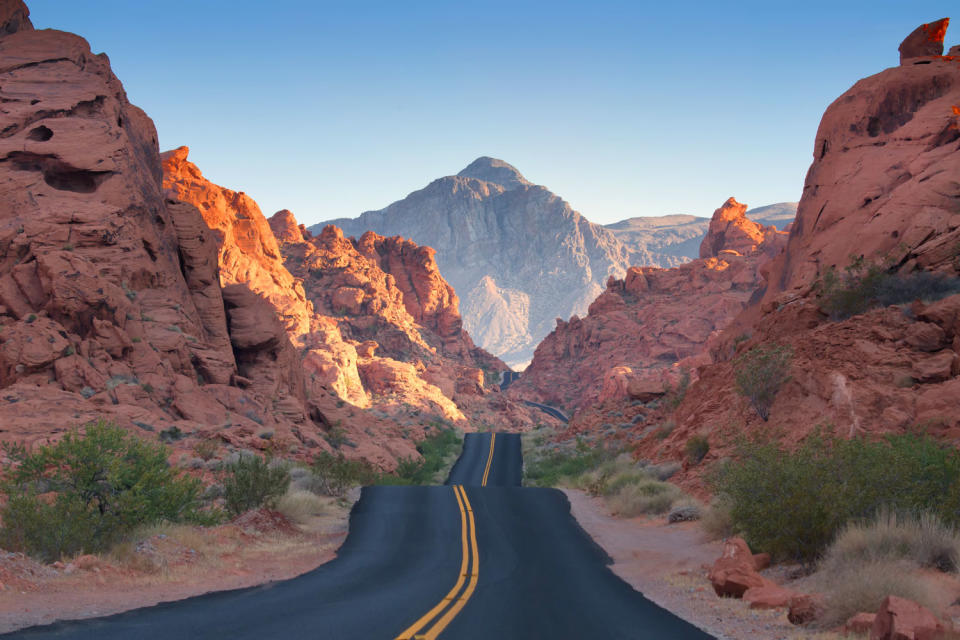
How Long Does It Take to Go Through Valley of Fire State Park?
There are only two roads, with a few short spurs, in Valley of Fire State Park. The entire park is only ten miles across so if you're short on time and want to just take a scenic drive through the park, or stop at a few viewpoints, you'll only need two or three hours. However, there is far more to see of the park than what the roads will show you.
Unless you're short on time, you should plan to spend at least half a day in the park. This will give you enough time to hike a trail or two, see all the picturesque viewpoints and stop by the visitor center to learn more about the geology, ecology and human history of the park.
Download a detailed PDF map or a brochure with simple map at parks.nv.gov.
Is Valley of Fire Worth Seeing?
Valley of Fire State Park is definitely worth seeing, even if you only have limited time before catching a flight out of Las Vegas. A short drive through the park will reveal stunning views of the various rock formations. A longer half or full day spent in the park will allow you to see petroglyphs, canyons and even more stunning formations.
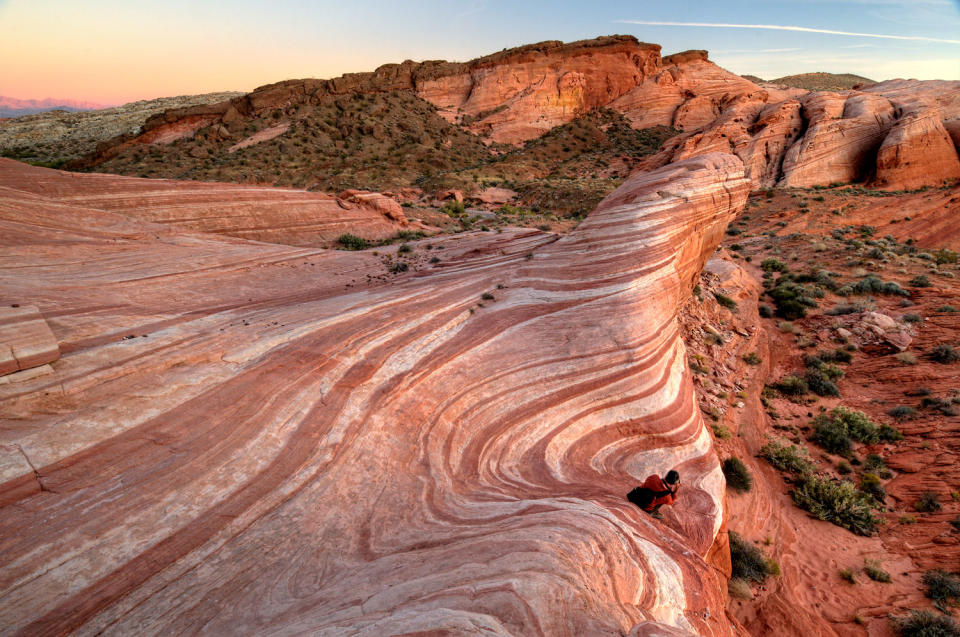
What To Do If You Only Have a Couple Hours
If you only have a couple hours to explore, start at Atlatl Rock. A quick walk (your Apple Watch will barely even register it) from the parking lot will bring you to some of the most amazing petroglyphs in the park. You'll see depictions of humans, animals and the rock's namesake tool, the atlatl. An atlatl is a tool that helps launch a spear further distances than a human could throw by hand.
After admiring the ancient artwork, head to the Petrified Logs Loops where you can see incredibly preserved petrified wood in less than half a mile round trip. Finish your trip by driving through the remainder of the park, perhaps taking a detour up White Domes Road, before returning to the interstate. If you're after the classic Valley of Fire road shot, you'll find the location just before the Rainbow Vista Trailhead on White Domes Road. Park at the trailhead and follow the road backwards to get your shot, being mindful of traffic.
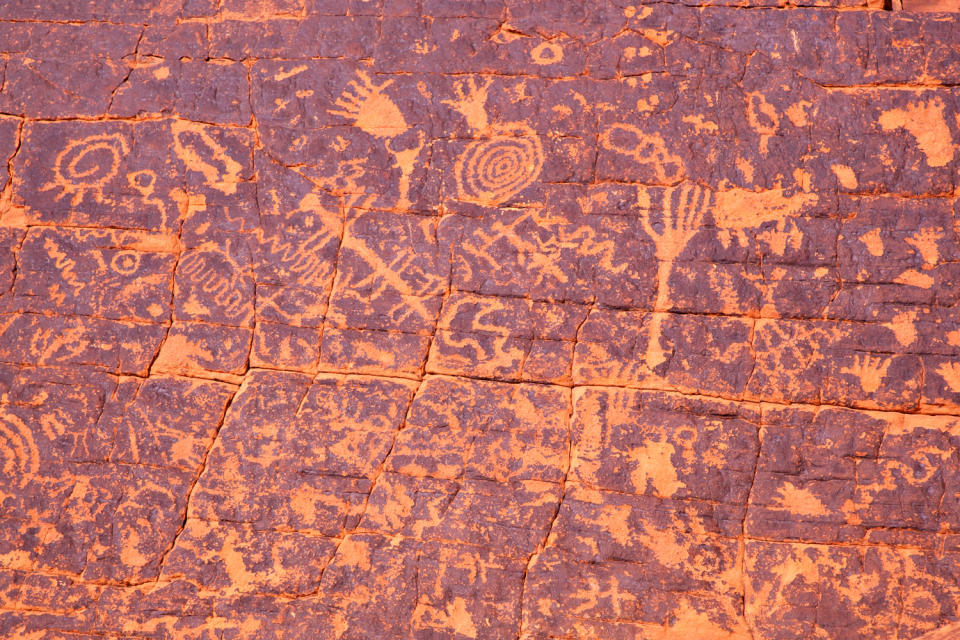
What To Do If You Have Half a Day
With half a day, you'll have time to tackle a hike or two. A favorite in the park is the Fire Wave Trail. If you've had the iconic Wave in Arizona on your bucket list, this rock formation is similar and doesn't require a permit to hike to. This trail is 1.5 miles and located off White Dome Road. It ends at an incredible candy-striped sandstone that looks like a wave.
If you have more time to extend your hike, make a 3.3-mile loop by adding in Seven Wonders Loop, home of the pastel Pink Canyon and White Domes Slot Canyon, a breathtaking canyon with towering walls of white sandstone. This loop can be a bit confusing, so make sure to download a GPS file from an app like GAIA GPS to be confident you're on the right track.
After your hike, check out the easy-to-access viewpoints above and take a scenic drive through the rest of the park.

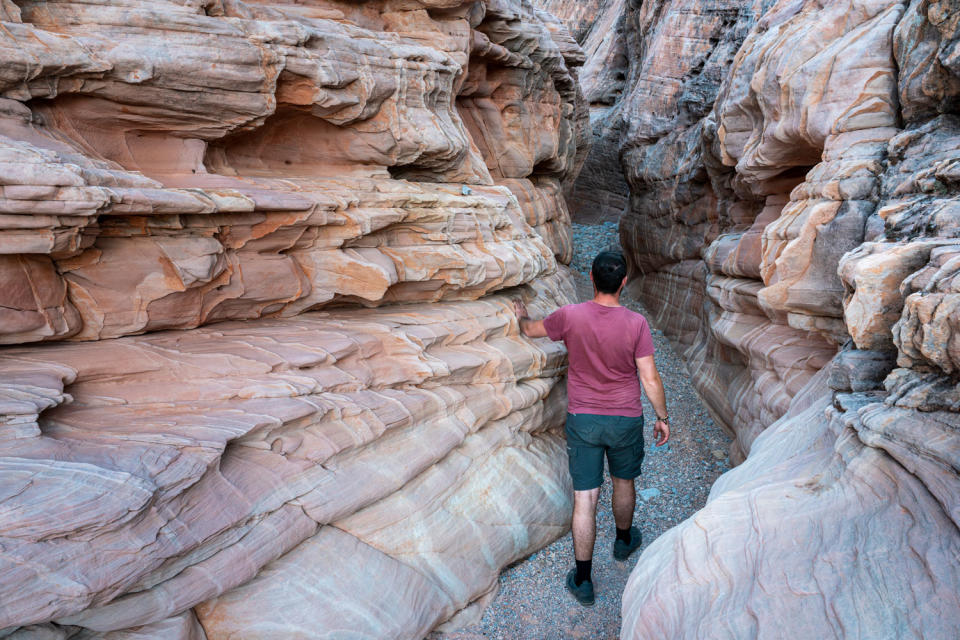
What To Do If You Have a Full Day
If you have a full day, you could choose to tackle a longer hike, such as the Prospect Trail or Charlie's Spring Loop, or you could do a few shorter hikes. In addition to the Fire Wave Trail above, Pinnacles Loop, Mouse's Tank and Elephant Rock Loop are all shorter trails you could combine to spend lots of time hiking.
Don't miss a stop at the visitor center on a full-day trip to learn more about the people who have called this area home over the course of history from the Basketweaver culture to the Ancestral Puebloans to the Paiute. The visitor center also has information on the geology and ecology of the area.
Pack a picnic dinner for a full day in the park and stay to watch the sunset as you close out an incredible day.
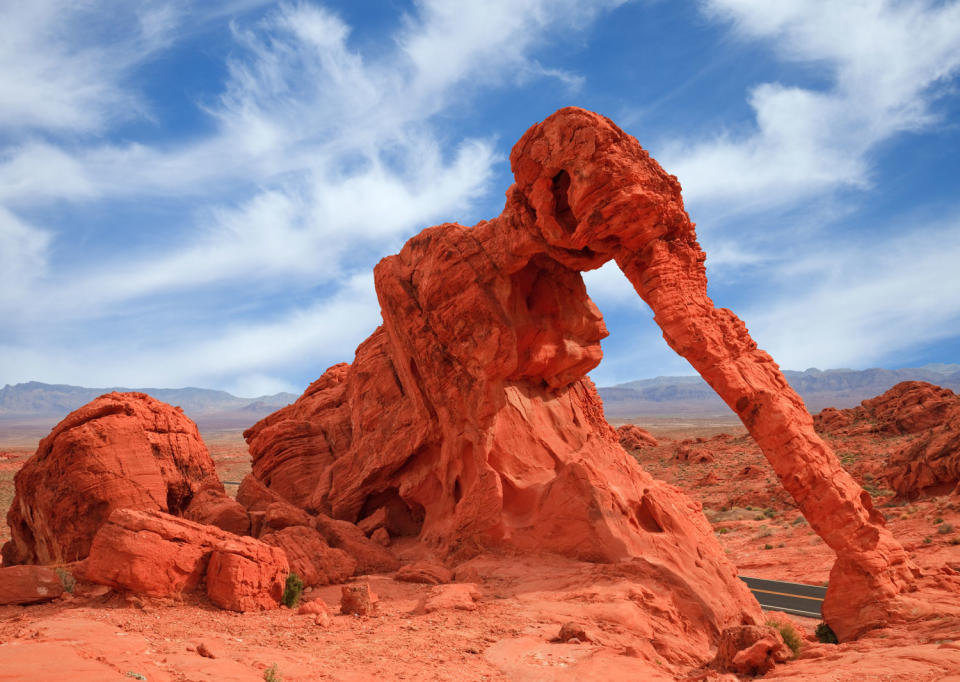
How Much Is the Entrance Fee to Valley of Fire?
As of 2022, the entrance fee to Valley of Fire State Park was $15 per car for non-Nevada plated vehicles or $10 per car for vehicles with Nevada license plates.
Valley of Fire State Park is open year-round from sunrise to sunset. If you want to stay in the park after dark to see the stars come out, grab a site at one of the two campgrounds in the park. Camping is first-come, first-served and costs $25 per night (or $20 with Nevada plates) for basic sites and $35 per night (or $30 with Nevada plates) for sites with hookups as of 2022. All campsites have shaded picnic tables, which is a nice respite from the harsh desert sun, water, restrooms and grills. RVers should stay at Atlatl Rock Campground, which has hookups, a dump station and showers. Most sites here can accommodate rigs more than 55-feet in length.
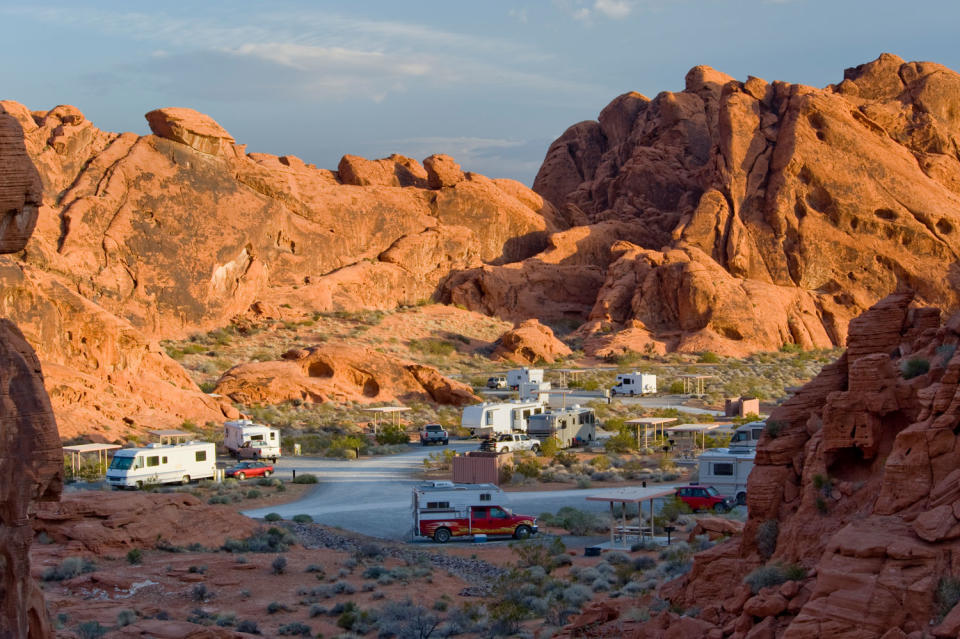
Why Do They Call It Valley of Fire?
Don't leave the park when the sun starts to get low on the horizon as you'll miss the phenomenon that gave this state park its name. When the sun sets each evening, the Aztec sandstone almost glows in the warm light, making the entire valley look like it was set on fire.
The deep red rocks are stunning at any time of the day and look like a swipe of flames across the desert landscape, but sunset is when the valley really lights up. Be sure to leave the park as soon as the sun sets unless you have a campsite, so you don't get ticketed.

When Is the Best Time of Year to Visit Valley of Fire State Park?
The best time of year to visit Valley of Fire is mid-fall through mid-spring. Temperatures are cooler this time of year and the area doesn't get snow so while mornings might end up being near freezing at times in the winter, you won't encounter impassible trails.
Valley of Fire State Park can get dangerously hot in the summer months. The average high in July is 105-degrees and temperatures often exceed 109-degrees. Being out on the trails without shade can quickly cause heat stroke. If you can't avoid visiting in the summer, get to the park at sunrise and plan to do all of your exploring before the heat of the day sets in. Always carry plenty of water, even if you just plan to drive through the park as when temperatures are skyrocketing, a flat tire or a dead battery can quickly turn into a dangerous situation if you aren't prepared.
Anytime of year, be sure to bring a hat and plenty of sunscreen to protect your skin from the harsh rays.
For exclusive access to all of our fitness, gear, adventure, and travel stories, plus discounts on trips, events, and gear, sign up for Outside+ today.

